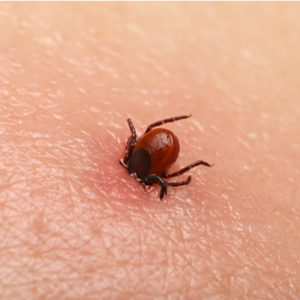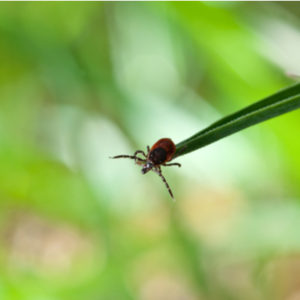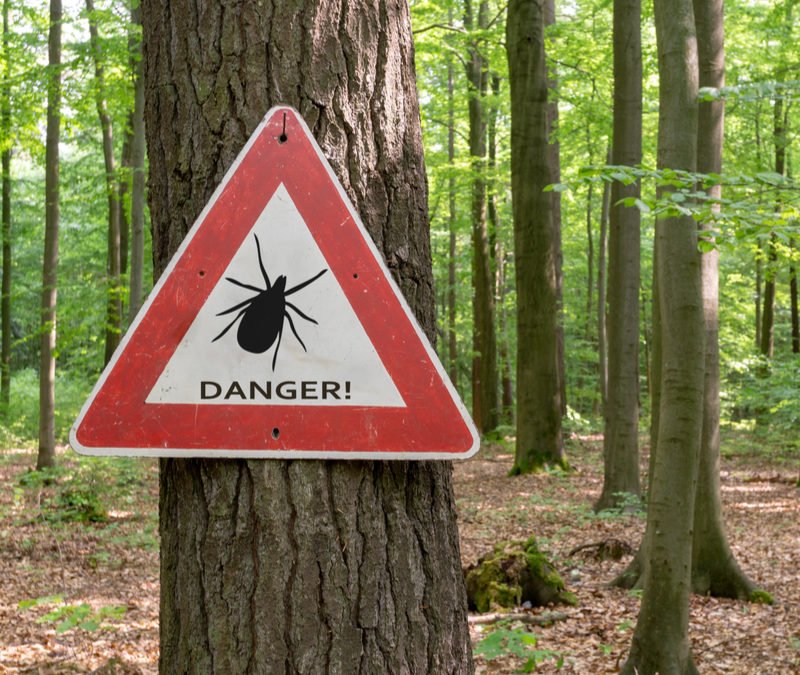Across the country, 2019 has been a bad year for tick and mosquito-borne diseases, especially here in the North East. As the cooler temperatures of fall roll around, it’s easy to think that the threat is over. Unfortunately, fall is an active time for ticks. We’ve put together a fall tick prevention guide to help you turn your lawn into a tick-free zone.
Tick-Borne Diseases

The first thing to know about ticks is that they are dangerous. Tick-borne diseases have grown more prevalent over the past decade and it doesn’t look like that’s changing anytime soon. In fact, ticks are responsible for 95% of all vector-borne infections. Over the last ten years, this region has had the highest concentration of tick-borne disease infections in America, and it’s not even close. While there are lots of different species in ticks, we have four ticks to worry about here in Massachusetts.
- American Dog Tick: Rocky mountain spotted fever, canine tick paralysis, and tularemia.
- Blacklegged Tick (Deer Tick): Lyme Disease, Powassan virus, babesiosis, and anaplasmosis.
- Lone Star Tick: Tularemia, Ehrlichiosis, Rocky Mountain spotted fever, Southern Tick-Associated Rash Illness (STARI), Bourbon virus, Heartland virus, and an allergy to red meat.
- Brown Dog Tick: Tularemia and Rocky Mountain spotted fever.
Massachusetts Ticks and the Diseases They Carry:
This past decade has seen a boom in the American tick population. Warmer and wetter weather along with longer summers mean tick habitats are growing. This means they are coming into contact with people more often now than ever before. On top of that, new tick-borne diseases are popping up every year. All of this means tick control has never been more important.
Fall Tick Prevention Tips
Tick prevention is the best form of control. Ensuring your lawn is a tick-free zone by using cultural practices to make your lawn is inhospitable to ticks is a great way to reduce the population of these dangerous pests. Here are a few highly-effective fall tick prevention tips.
Leaf Removal
In the fall, ticks look for warm places to hide out and wait for their next meal to walk by. A pile of leaves is a common hiding spot for ticks. Reduce the likelihood of running into a tick this fall by removing any piles of leaves, sticks, or twigs in your yard. By removing this common hiding place, you’ll be dissuading ticks from making a home in your yard.
Short Grass

Ticks also love hiding out in tall grass. They climb to the top of a blade of grass and wait for something to walk by and become their next meal/home. Eliminate this tick habitat by keeping your grass cut short throughout the fall. If there is tall grass and wild brush around the edge of your property, you should also cut this down. By doing this, you’ll create a tick-free buffer zone around your lawn.
Trim Your Trees and Shrubs
Another place that opportunistic ticks love to hang out is on the branches of trees and shrubs. This is especially true if the branches are growing close to the side of a nice, warm house. Take a walk around your property and check the state of your trees and shrubs. If their branches are close to or touching the side of your home, then trim them back. Not only is this good for the trees and your home, but it’ll also help keep ticks away from your house.
Play Structures
Children under ten are more likely to contract Lyme disease than any other age group. Help protect the kids while they’re playing in the yard by making sure your child’s play structure and toys are far from any long grass or tall brush. If possible, move everything towards the center of your yard, making sure it’s not under any low-hanging trees. Keep the grass short around these structures and make sure to check your kids for ticks when they come inside.
Prepare Yourself
Keeping yourself safe while working outside is essential. Always wear long pants and long-sleeved shirts. While it may look goofy, tucking your pants into your socks is a great way to keep ticks from crawling into your pants and biting your ankles. Wear white or light-colored clothing so it’s easy to spot any hitchhikers that you may pick up. Clothing treated with permethrin or wearing bug spray that contains at least 20-30% DEET will create a tick-free barrier around you while you work.
Quickly and Safely Remove Ticks
Do a thorough tick-check of yourself after you come inside, making sure you check your ears, hairline, neck, armpits, groin, legs, knees, and toes. Ticks and their nymphs are very small so you’ll need to really look for them.
It can take 36-48 hours for a disease like Lyme disease to be transmitted from a tick bite, so it’s important to remove a tick as soon as possible. Use a pair of tweezers or a tick remover to grip the tick by the head, as close to the skin as possible, and gently pull it off. After removing it, wash the area with soap and water. Continue to monitor the site for a few days, keeping an eye out for a rash or a fever.
Professional Tick Control
While these cultural practices will help reduce the population of ticks in and around your yard, nothing beats professional tick control services. Here at Barefoot Lawns, we have tick control services to help protect you and your loved ones from these dangerous pests.
Give us a call at (508) 281-1441 or contact us here. For more tips and tricks from the pros, visit our blog.


Recent Comments